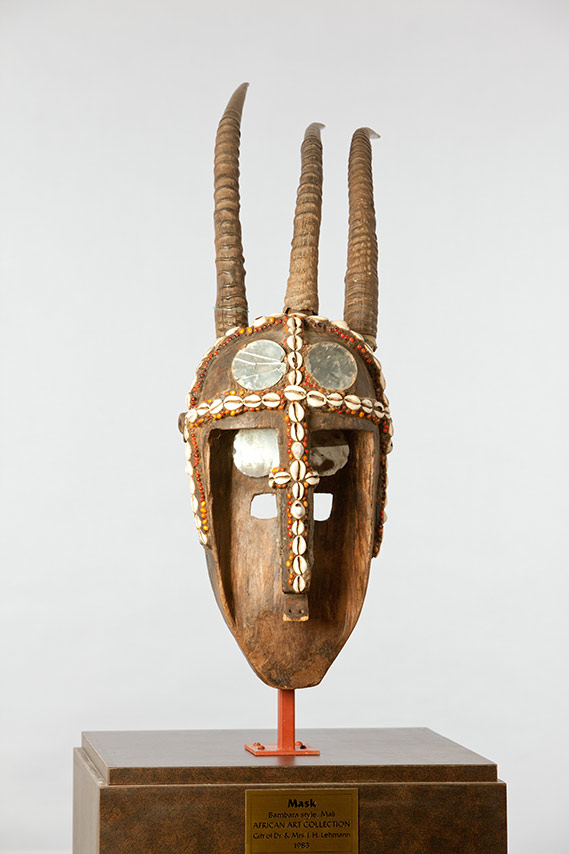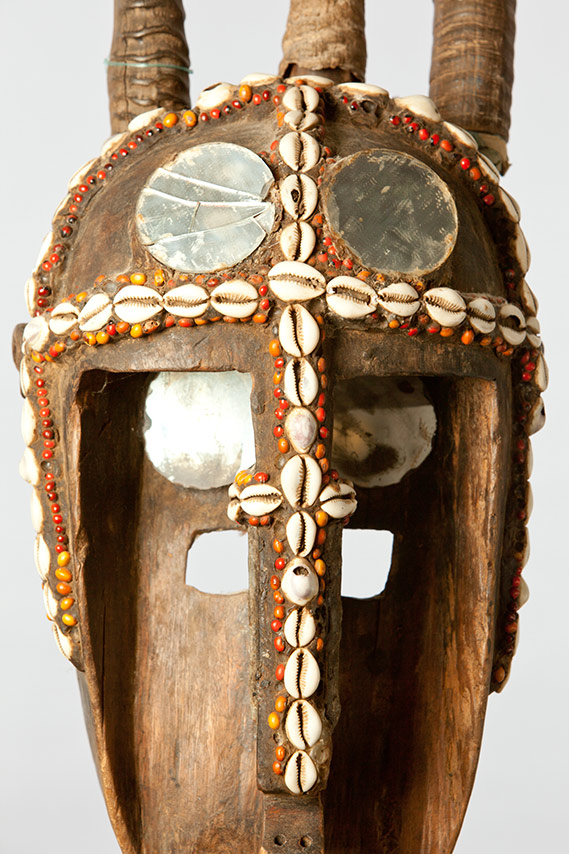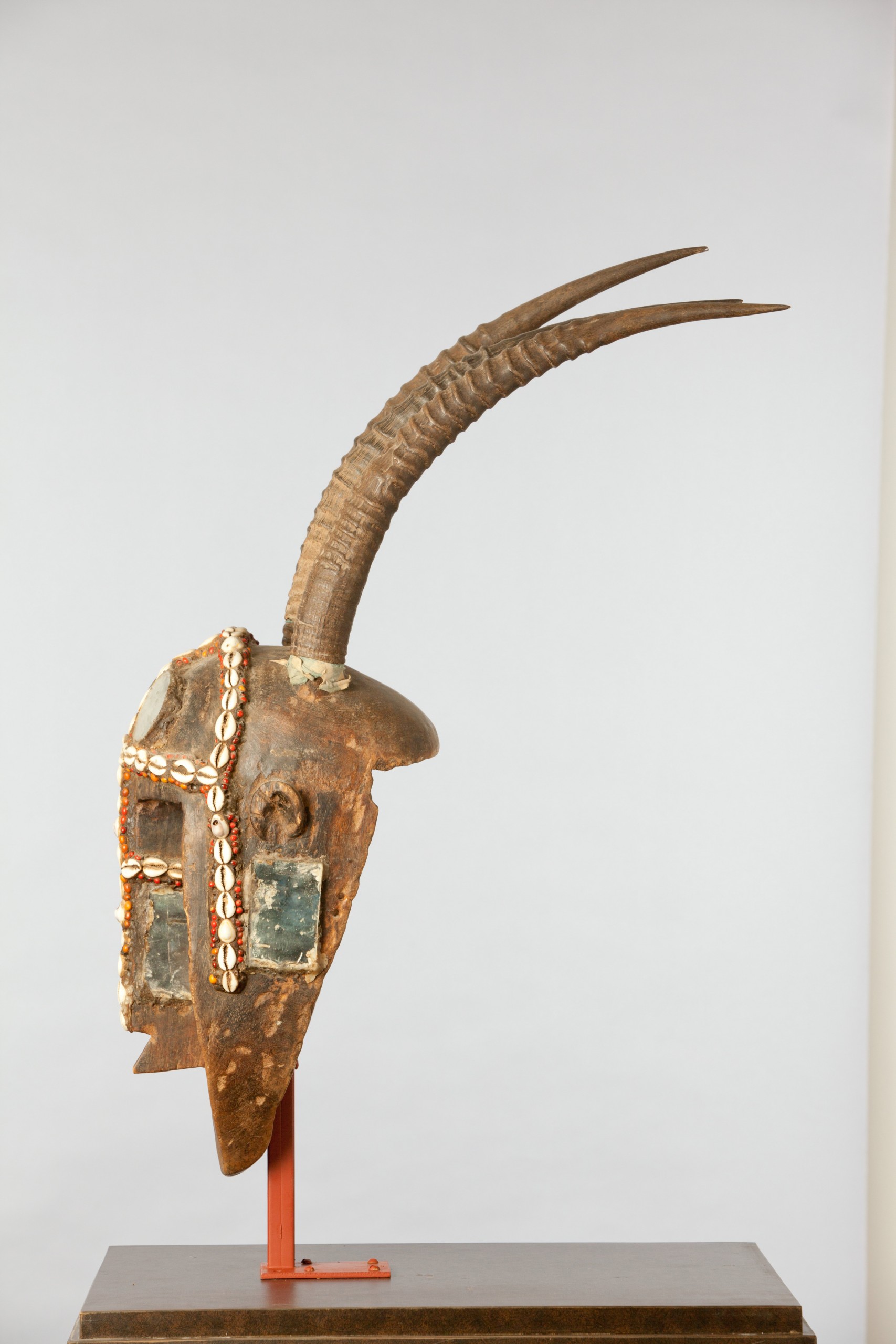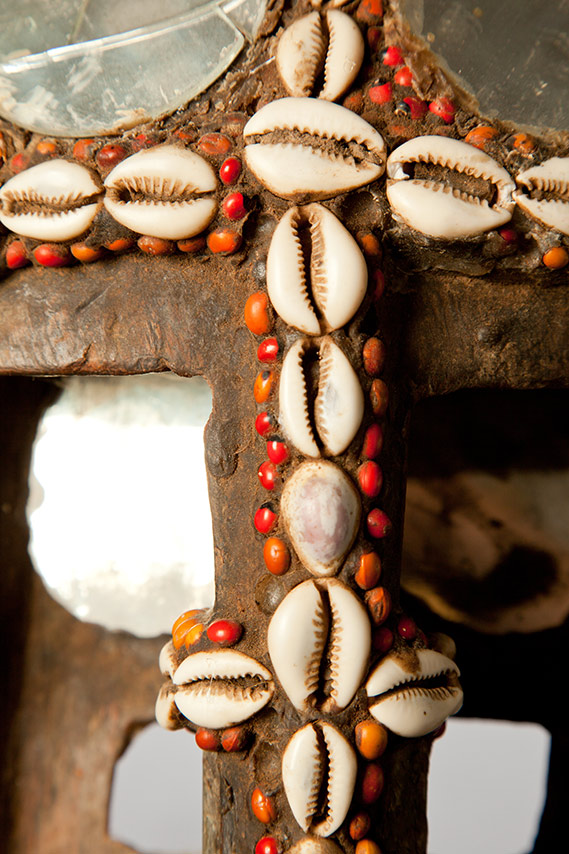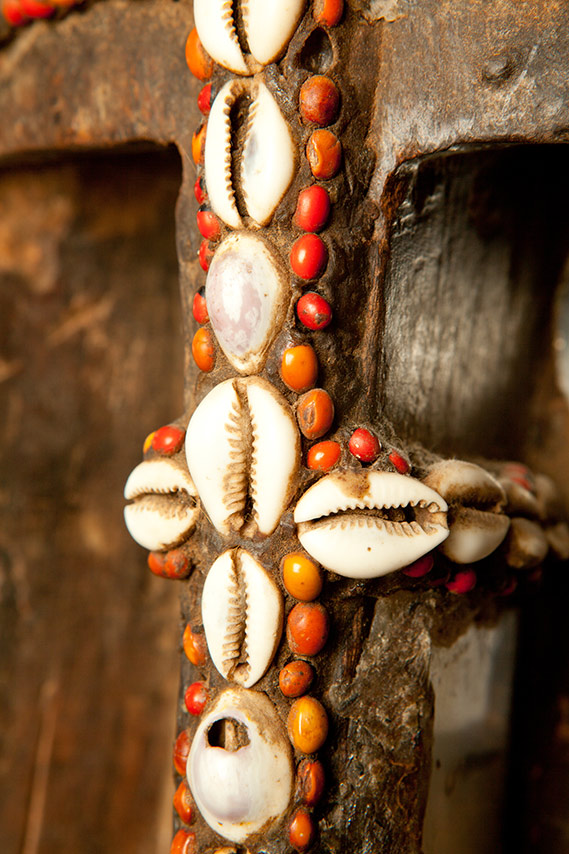Learn More: Bamana Mask
The Bamana are a large and powerful ethnic group in Mali, West Africa. Both Islamic and traditional religious views are entwined in Bamana culture. The political structure is patrilineal, meaning positions are inherited and handed down through the male side of the family. Political leaders also control the group’s religious arrangement. Adulthood is earned through the process of six major initiation societies, collectively called the jow, which are used as both a religious and educational system. Bamana males go through all six of the societies in order to be able to marry and start their role in adulthood, while Bamana females go through just one initiation society. Each of these different societies within the Bamana culture has its own unique masks. The mask in the PLU collection belongs to one of these, the ntomo society.
The ntomo society is a five year period for uncircumcised boys, and the first society of the six they go through to become recognized as men. Boys are taught to accept discipline and endure hardship quietly, which includes ritual flagellation sessions in complete silence. This experience is reflected in the ntomo society’s masks, which have small shut mouths or no mouth at all. Mask dancers also carry whips with them, which relates to ritual flagellation. Silence is also taught as the lesson of keeping secrets. They even have a well-known song throughout the Bamana culture (Sotheby’s):
Aw ye a gweleya aw daw la, da de jugu ye
‘Close your mouth firmly, close your mouth; the mouth is the enemy’
The last event for a member in this society is circumcision, which is believed to be the physical destruction of childhood androgyny. The Bamana believe that the male foreskin is feminine and removal of it allows a boy to mature into a man. This belief is also reflected in their masks. The number of horns on a mask indicate the gender of the dancer’s role: females are represented by four or eight horns, males are represented by three or six horns, and androgyny is represented by two, five, or seven horns.
The mask in the PLU collection is made from wood and crowned with three animal horns. The horns are long and swoop back from the front of the mask. The face of the mask is oval shaped with a long nose. The nose, forehead, and temples of the mask’s face are decorated with cowrie shells and red and orange abrus seeds. Four small circular mirrors are positioned above the eyes on the left and right side of the mask, and two small rectangle mirrors appear on either side of the mask. Small circle shaped ears are carved above the rectangle mirror on the cheek area of the mask. The other rectangle mirrors are placed on either side of the nose. The mask has no mouth.
The members of the ntomo society make their own masks, which allows for many variations in design, but they all have the same purpose of being beautiful. Often cowrie shells and small red or orange airbus seeds, are used to enhance the design of a mask. Other societies’ masks can represent animals, but ntomo masks are anthropomorphic, which means they have human aspects to their form. The usual human characteristics used are a long straight nose, small mouth, and eyes.
The annual ntomo initiation ceremony, when these masks are used, takes place during harvest time. The ntomo masks can also be seen in dances during other times of the year, such as during the dry season. The masks are worn while dancing, and are meant to look beautiful on a talented dancer. Dancers are dressed either in white or ochre, an earthy pigment of reddish coloring. After circumcision and graduation from the ntomo society, the male’s next step in life depends on his own personal background and family history. From this point on, the boys will be trained to follow their father’s role in society; many follow their family’s history of being farmers.
Since the ntomo mask in the PLU collection was most likely used, there is some damage on it. One of the top forehead circle mirrors has been cracked, and one of the lower circle mirrors has major wear causing it not to reflect completely. The tip of the long nose is chipped, and the there are some broken cowrie shells near the bridge of the nose. There are many missing abrus seeds in the design over the face. The wood which makes up the face of the mask has scratches and marks. Two of the horns line up perfectly with each other, while one seems to be off from the others.
– Madeline Marello ’18, Psychology
Sources:
Africa Direct. African Masks. Bamana Horned N’tomo Mask Metal Mirrors Stand Mali Africa. http://www.africadirect.com/masks/bamana/bamana-horned-n-tomo-mask-with-metal-mirrors-seeds-mali-african.html
Colleyn, Jean-Paul. Bamana. Milan, Italy. 5 Continents, 2009.
For African Art. Archive of Sold Items. Ntomo Mask 2363.
Sotheby’s. Online catalogue of a private collection. 144 Bamana Ntomo Mask, Mali. http://www.sothebys.com/en/auctions/ecatalogue/2015/african-oceanic-n09347/lot.144.html



